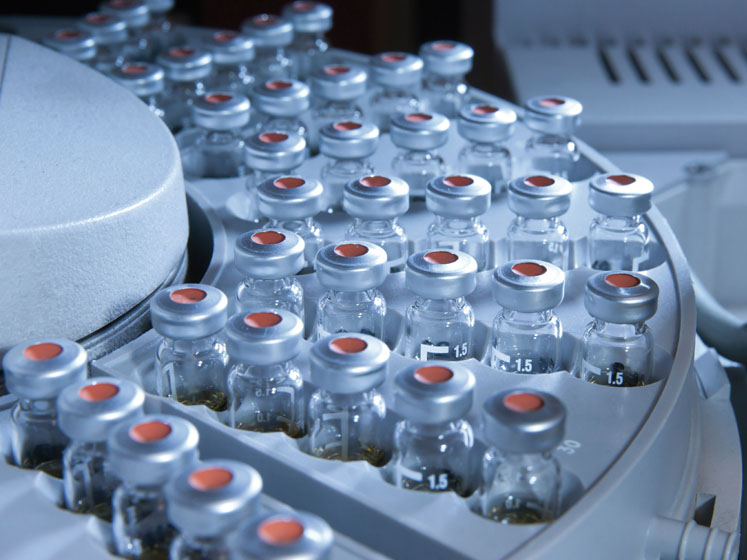Unlike traditional pharmaceuticals, which are produced by chemical syntheses, biopharmaceuticals are manufactured in living organisms, including bacteria, yeast and mammalian cells. This allows the production of more complex molecules that address a multitude of diseases that were previously difficult to treat with traditional approaches.
The use of automation and process analytical technology (PAT) in drug production is key to ensuring product quality and safety. It is also critical because of rising cost pressures, increased competition and productivity challenges. But whereas some manufacturing industries have made moves to advance automation approaches, the biopharma industry has been slower to embrace the shift and efficiencies afforded, often owing to regulatory constraints.
There is a widely held perception in the industry that regulators are inherently risk-averse and act as a hindrance to innovation. Although incorrect, this perception has become a self-fulfilling prophecy, as industry now spends more time pre-empting issues regarding how regulators will respond, rather than discussing, developing and implementing ways to best introduce and incorporate new technologies. In many cases, including automation, innovation has stalled as a result.
So, what can the biopharma industry learn from these other industries that are leading the way? And in what way does biopharma need to forge its own path?
Automation and continuous processing in other industries
The automotive industry, which has been automated for decades, is constantly advancing technologies used to streamline and improve manufacturing processes. As an industry, it is widely recognised as a leader in the adoption of automated technologies, with the Ford Motor Company often being credited with pioneering automation by introducing a car production assembly line.
Not only did automation increase the volume of cars that Ford could produce, it also reduced the cost of a car, making it more affordable and expanding access, which not only changed manufacturing, but also had implications for society as a whole.

Loe Cameron
Today, automation, robots and Industry 4.0 have arrived; they are redefining manufacturing and taking control of processes and machinery. The automotive industry is utilising technologies such as 3D printers, virtual reality and augmented reality to address manufacturing issues and drive quality and efficiency.
It also is capitalising on the possibilities of Industry 4.0 by programming machines to communicate with one another, as well as human operators. In the case of the food and beverage industry, automation is successfully used to ensure quality control throughout the supply chain. Any problems can be detected much earlier in the process, such as during packaging, which results in fewer problematic goods entering the market and improved quality control.
It is automation that has been the catalyst for the shift from traditional batch processing to modern continuous (or almost continuous) flow production lines. Continuous production enables the assembly and manufacture of a wide variety of products around-the-clock in multiple industries.
It also can improve production time, hygiene, environmental impact and the cost of operation (compared with batch processes). With a much smaller footprint, continuous processes provide substantially increased capacity and improved operational efficiency while reducing waste.
A key part of this revolution in automation includes the ability to incorporate analytics into processes. This means being able to measure the progress of a product as it is assembled at key stages of an automated process. Data can be analysed to identify bottlenecks in the process steps and map ways to globally optimise it.
Moreover, these improvements in process steps and management systems can be made automatically. Industry 4.0 allows us to employ machine learning to refine the process with time and implement dynamic changes in real-time and/or continuously. Such smart innovation is already disrupting and breaking new ground in many industry sectors.
Innovations in biopharma
Realising the potential gains from automation, analytics and Industry 4.0 would be of great benefit to biopharma. Although there are many automated technologies and analytics systems available, there are few that are specifically designed for the biopharma industry.
Therefore, the wholesale adoption of technology solutions developed and employed in other sectors is not viable; the biopharma industry must build on those advancements to develop its own automation, analytics and Industry 4.0 solutions.
This could mean taking a different approach to equipment design and deployment, looking at how we can simplify and improve existing technologies. When it comes to analytics, equipment will need to be reimagined for the manufacturing suite wherein features such as speed, direct integration into the single-use flow path and cost are more critical than the multiplexing capability these systems have today.
On the data side, there is a need for specialist software that builds on the significant advances seen in other industries … but is tailored to the specific regulatory and performance requirements of the biopharmaceutical manufacturing sector. The convergence of this next generation of analytical equipment and software is crucial for continuous bioprocessing.
Now that the initial roadblocks (either real or perceived) are being successfully navigated, biopharma manufacturers are beginning to experience the benefits that automation, especially smart automation, can offer. These improvements in productivity benefit manufacturers and, ultimately, the patient, enabling the industry to stay competitive in an increasingly automated world.
The journey to continuous bioprocessing in biopharma
Continuous bioprocessing offers several advantages compared with batch processing as it is more time- and energy efficient. It can also improve productivity as well as help to reduce waste and minimise human error, as fewer people are involved in the process from start to finish. From a patient perspective, continuous bioprocessing can expedite and industrialise the development of “drugs on demand,” which could open the door to an era of truly personalised, high precision medicines.
The logical end-point of the journey to continuous bioprocessing is real-time release — whereby product emerges from a fully automated manufacturing line already sampled, tested and ready to be distributed. Every hour spent holding product represents lost revenue, decreased productivity and added risk, so the positive impact of removing these delays would be considerable.
Perhaps more importantly, speed-to-market and to the clinic would rapidly increase without any foreseeable negative impact on quality or safety.
However, there remain numerous obstacles that need to be overcome, particularly regarding data and how to manage and use information; in real-time release, the sheer quantity of data would be vast.

For example, in the chromatography stage of continuous bioprocessing, in real-time, there might be 100 data pools to analyse compared with just one pool when using current manufacturing processes. It is simply not viable to have humans processing this amount of data — machine learning capable of advanced data analysis and modelling would certainly be necessary and, as an industry, we’re just not there yet!
Bridging the skills gap in biopharma
In this sector, humans are often still responsible for reviewing data, writing and submitting reports, which takes time. We must be able to analyse and respond to data more quickly. As analytical tools become more sophisticated and the amount of data produced at each stage of an experiment or bioprocess increases, informatics solutions will need to keep pace to rapidly convert this data into useful information. We’ll also need to see the skills profile of our industry evolve to match this technological evolution.
As smart automation and continuous bioprocessing become increasingly the norm, the tasks required to produce biopharmaceuticals will change and the makeup of the manufacturing team will evolve. Operators will need to be capable of managing and overseeing continuous processes and the automated systems that run them.
We will see computer science expertise becoming as important in our sector as more traditional scientific backgrounds, especially as more advanced smart technologies and true artificial intelligence become mainstream.
Regulatory hurdles
Returning to regulatory constraints — still perceived to be the biggest hurdle in the wider implementation of continuous bioprocessing and our embracing of automation in this industry — it is important to focus more closely on the similarities and differences between batch and continuous bioprocessing.
From a regulatory perspective, continuous bioprocessing is not inherently different to batch processing. Continuous bioprocessing operations may be sequenced differently, but they are still the same operations that require the same safeguards, quality checks and standards as with traditional batch systems.
It is the continuous nature of the process that brings nuances and challenges; therefore, this is when manufacturers and regulators need to focus. Whereas in batch manufacturing, the entire material can be collected and tested before moving to the next step, this is currently not possible or optimal with continuous processing.
It is both an advantage and disadvantage. Material flows from one step to the next without stopping, which then raises concerns about the possibility of contaminants passing through the process unchecked. However, because a continuous line allows manufacturers to maintain a completely closed system, continuous processes tend to reduce the risk of contaminants — but only if the system is designed correctly.
The incorporation of analytics at key stages of the process can further support the system to avoid contaminants.
The design, deployment and monitoring of smart systems, which would incorporate advanced analytics, is critical in tackling this regulatory challenge and ensuring the production of safe and effective biopharmaceuticals. As such, all stakeholders should be represented, including regulatory authorities, to ensure the value-sensitive design of these systems.
It is vital that automation, analytics and Industry 4.0 are more widely and effectively applied in the biopharma industry, as the potential benefits promise to disrupt and substantially improve the industry for the good of patients worldwide.




